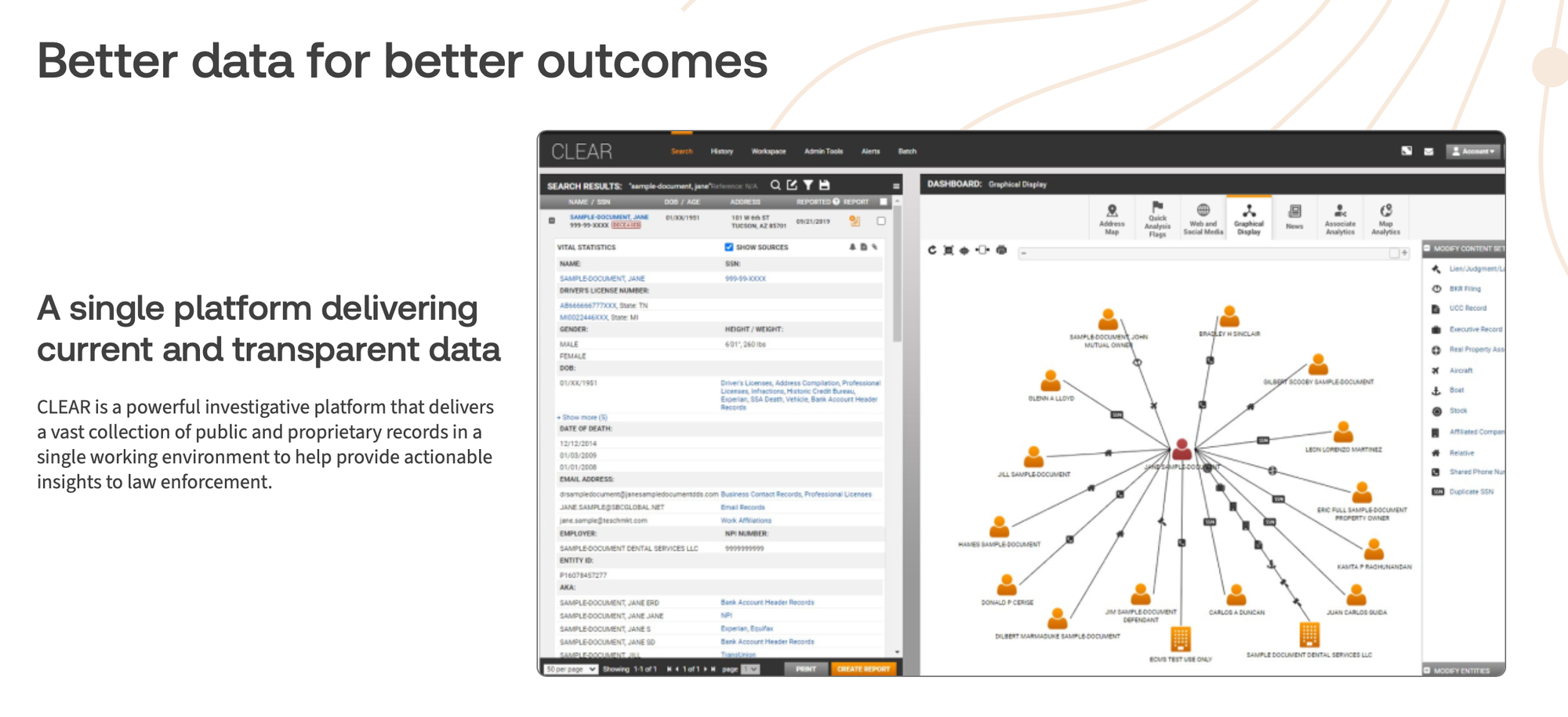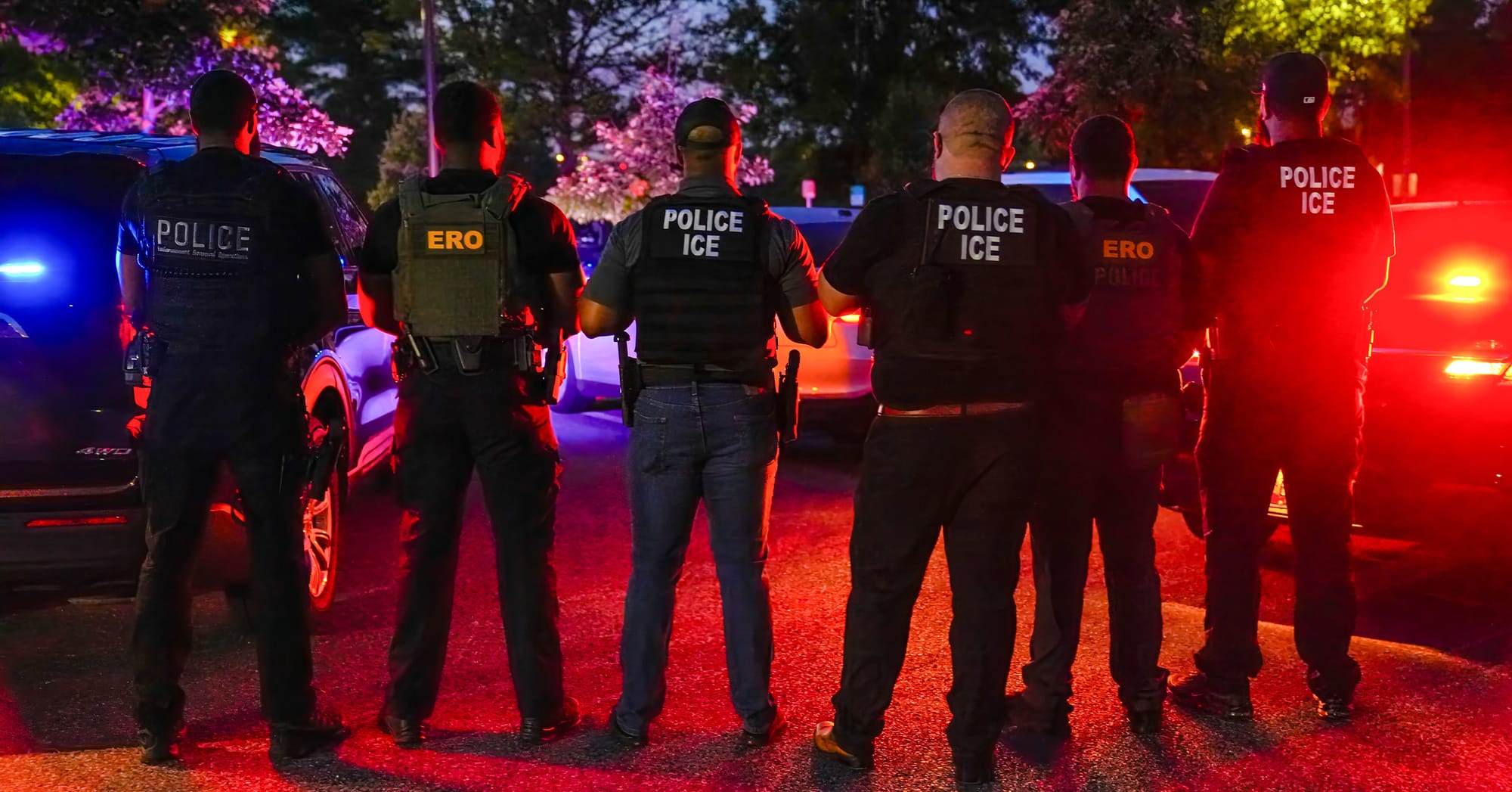Immigration and Customs Enforcement (ICE) recently invited staff to demos of an app that lets officers instantly scan a license plate, adding it to a database of billions of records that shows where else that vehicle has been spotted around the country, according to internal agency material viewed by 404 Media. That data can then be combined with other information such as driver license data, credit header data, marriage records, vehicle ownership, and voter registrations, the material shows.
The capability is powered by both Motorola Solutions and Thomson Reuters, the massive data broker and media conglomerate, which besides running the Reuters news service, also sells masses of personal data to private industry and government agencies. The material notes that the capabilities allow for predicting where a car may travel in the future, and also can collect face scans for facial recognition.
The material shows that ICE continues to buy or source a wealth of personal and sensitive information as part of its mass deportation effort, from medical insurance claims data, to smartphone location data, to housing and labor data. The app, called Mobile Companion, is a tool designed to be used in real time by ICE officials in the field, similar to its facial recognition app but for finding more information about vehicles.
The tool “includes a feature that enables your phone to function as a license plate recognition camera. This capability allows ERO [Enforcement and Removal Operations] officers to quickly identify and process license plate information,” a message sent to all ERO staff, and viewed by 404 Media, reads. The mobile app also integrates with a desktop application called Vehicle Manager, which is “designed to assist ERO personnel in searching, analyzing, and managing license plate data to support a wide range of operations across ERO.”
The material sent to ERO personnel shows both Motorola and Thomson Reuters are involved in the capability. Thomson Reuters has previously faced criticism for selling data to ICE during the first Trump administration, when the government was forcibly separating families at the border.
Motorola, through two acquired companies called Vigilant Solutions and Digital Recognition Network (DRN), has license plate reading cameras spread all across the U.S. Vigilant cameras are either installed at a fixed location or placed in a police officer’s roaming patrol vehicle, which constantly scan vehicles they drive past. DRN’s tech is much the same, but its scans are crowdsourced by hundreds of repo men who have the cameras installed in their vehicles. Motorola says it has “billions” of detections.

That data then feeds into Motorola’s product that customers can run their own searches against, allowing them to see where a vehicle previously was “and determine where it may be located in the future,” according to Motorola marketing material available online. “Convoy Analysis” is a tool that “helps identify vehicles traveling together,” according to a Department of Homeland Security (DHS) report which looked at various license plate reader tools available on the market.
The Mobile Companion app lets users contribute to that dataset while on the move, according to other marketing material available online. Users can get push notifications when the Motorola surveillance network detects a hot listed vehicle (meaning a specific license plate or vehicle law enforcement is looking for), and can look at license plate results in a specific location across time, to see what other vehicles had been there. The mobile app is also capable of capturing faces and uploading them to the Vigilant FaceSearch gallery, which is the company’s facial recognition tool.
The material sent to ICE says users can further enhance their investigations by combining Motorola’s license plate reader network with Thomson Reuters’ data. “Thomson Reuters CLEAR combines comprehensive public and proprietary data with nationwide license plate data from Motorola Solutions’ secure shared data network to help take vehicle-involved investigations to a more precise level,” the material says.
CLEAR is Thomson Reuters’ primary analysis product, which combines data from across public records and the web. That can include details on phone numbers, addresses, associates, and social media activity, according to a video on Thomson Reuters’ website. A document on Thomson Reuters’ website says CLEAR also contains driver license data, credit header data from Experian (which is the personal information, such as addresses, at the top of a credit report), marriage records, vehicle registrations, voter registrations, and much more.

In an email, a Thomson Reuters spokesperson said “Mobile Companion has no relation to CLEAR,” despite the material explaining in detail how users can enrich Motorola’s license plate data with CLEAR’s. The spokesperson added “There is no data in Mobile Companion that requires a search warrant to access.” Motorola did not respond to multiple requests for comment.
On its website, Thomson Reuters markets CLEAR as a tool that has saved an abducted baby, identified a wanted man, and caught a sexual predator. The marketing makes no mention of its tech being specifically used by ICE’s deportation arm.
Thomson Reuters continues to sign multimillion dollar contracts with ICE. In May, for example, ICE paid the company nearly $5 million for access to “license plate reader data to enhance investigations for potential arrest, seizure, and forfeiture,” according to public procurement records.
The Department of Homeland Security (DHS) did not respond to a request for comment.


